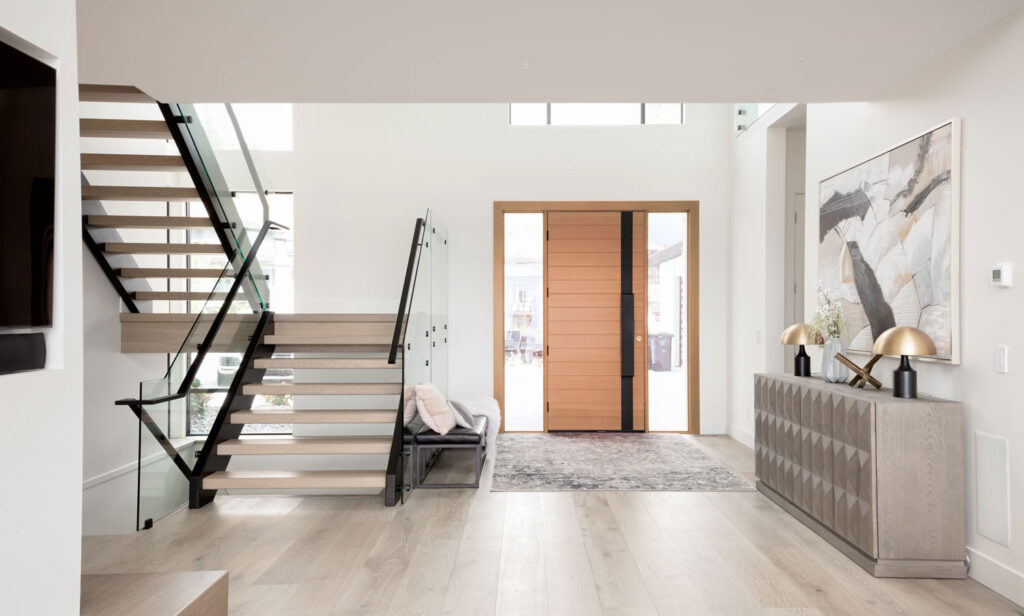Introduction:
In the realm of home design, every element plays a crucial role in shaping the overall ambiance and aesthetics of a space. While often overlooked, staircases hold a significant position, not only as functional components but also as architectural features that can elevate the entire design scheme of a home. From grand sweeping staircases to sleek and modern designs, the staircase serves as a focal point that commands attention and adds a touch of elegance to any interior. In this blog, we will explore the profound impact of staircase design on the overall appearance of a home, examining various styles, materials, and design considerations that contribute to creating a visually stunning and harmonious living environment.
The Significance of Staircase Design:
A staircase is more than just a means to move between different levels of a home; it is a structural element that can define the character and style of a space. Whether it’s a central staircase that greets guests upon entry or a hidden spiral staircase that adds intrigue and charm, the design choices made in regards to staircases can significantly influence the overall look and feel of a home.
Architectural Harmony:
The design of a staircase should seamlessly integrate with the architectural style of the home. For traditional or classical interiors, a curved staircase with ornate railings and balusters can enhance the sense of grandeur and sophistication. On the other hand, contemporary homes often feature minimalist staircases with clean lines and open risers, creating a sleek and modern aesthetic. Maintaining architectural harmony ensures that the staircase enhances rather than detracts from the overall design scheme of the home.
Focal Point:
A well-designed staircase has the power to become a focal point that draws the eye and serves as a conversation piece. Whether it’s a dramatic double staircase in the foyer or a floating staircase with glass balustrades, an eye-catching design can transform a mundane feature into a stunning work of art. By carefully considering the placement, shape, and materials of the staircase, homeowners can create a memorable focal point that sets the tone for the entire space.
Spatial Impact:
Staircases not only connect different levels of a home but also influence the perception of space. A poorly designed staircase can make a room feel cramped and confined, while a thoughtfully designed staircase can enhance the sense of openness and flow. Strategies such as open risers, glass balustrades, and strategically placed lighting can create visual transparency, allowing light to filter through and creating the illusion of a larger, more spacious environment.
Staircase Design Considerations:
When designing a staircase, several factors must be taken into consideration to ensure both aesthetic appeal and functionality. From the choice of materials to the configuration of the staircase, each decision plays a crucial role in shaping the final outcome.
Materials and Finishes:
The choice of materials for the staircase can significantly impact its appearance and overall feel. Wood, with its natural warmth and versatility, remains a popular choice for traditional and contemporary staircases alike. From classic oak to exotic hardwoods, the variety of wood species available allows homeowners to customize their staircase to suit their personal style and preferences. Alternatively, metal staircases offer a sleek and modern aesthetic, with options ranging from stainless steel to wrought iron. Combining different materials, such as wood and metal or glass and steel, can create visually striking contrasts and add visual interest to the staircase design.
Style and Configuration:
The style and configuration of the staircase should complement the overall design theme of the home while also taking into account practical considerations such as space constraints and traffic flow. Straight staircases are the most common type and are well-suited to compact spaces or modern interiors. Spiral staircases, on the other hand, offer a space-saving solution and can add a touch of whimsy to any interior. For larger homes or grand entrances, curved or helical staircases make a bold statement and exude elegance and sophistication.
Lighting and Accent Features:
Proper lighting can enhance the beauty of a staircase while also improving safety and functionality. Incorporating recessed lighting along the underside of the steps or installing a statement chandelier above the staircase can create a captivating play of light and shadow, adding depth and dimension to the space. Additionally, accent features such as decorative balusters, handrails, and newel posts can further elevate the aesthetic appeal of the staircase and tie it in with the overall design scheme of the home.
Conclusion:
In the realm of home design, the staircase serves as more than just a functional element—it is a key architectural feature that can profoundly impact the overall appearance and ambiance of a space. Whether grand and sweeping or sleek and modern, the design of a staircase plays a crucial role in defining the character and style of a home. By carefully considering factors such as architectural harmony, materials, configuration, and accent features, homeowners can create a staircase that not only connects different levels of their home but also serves as a stunning centerpiece that enhances the beauty and elegance of the entire space. Delonix Homes is a home builder in Chilliwack BC and builds homes throughout the Fraser Valley.

